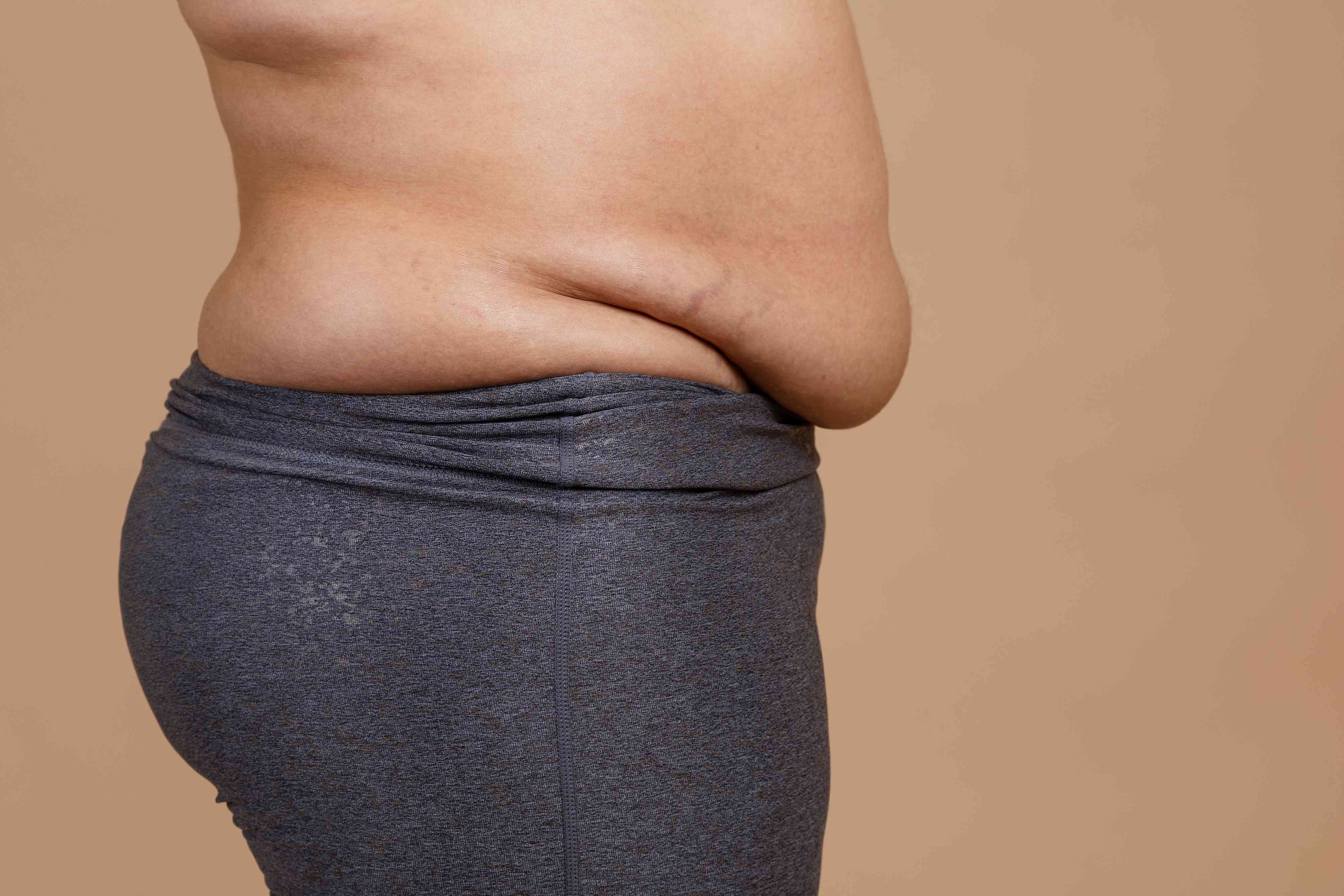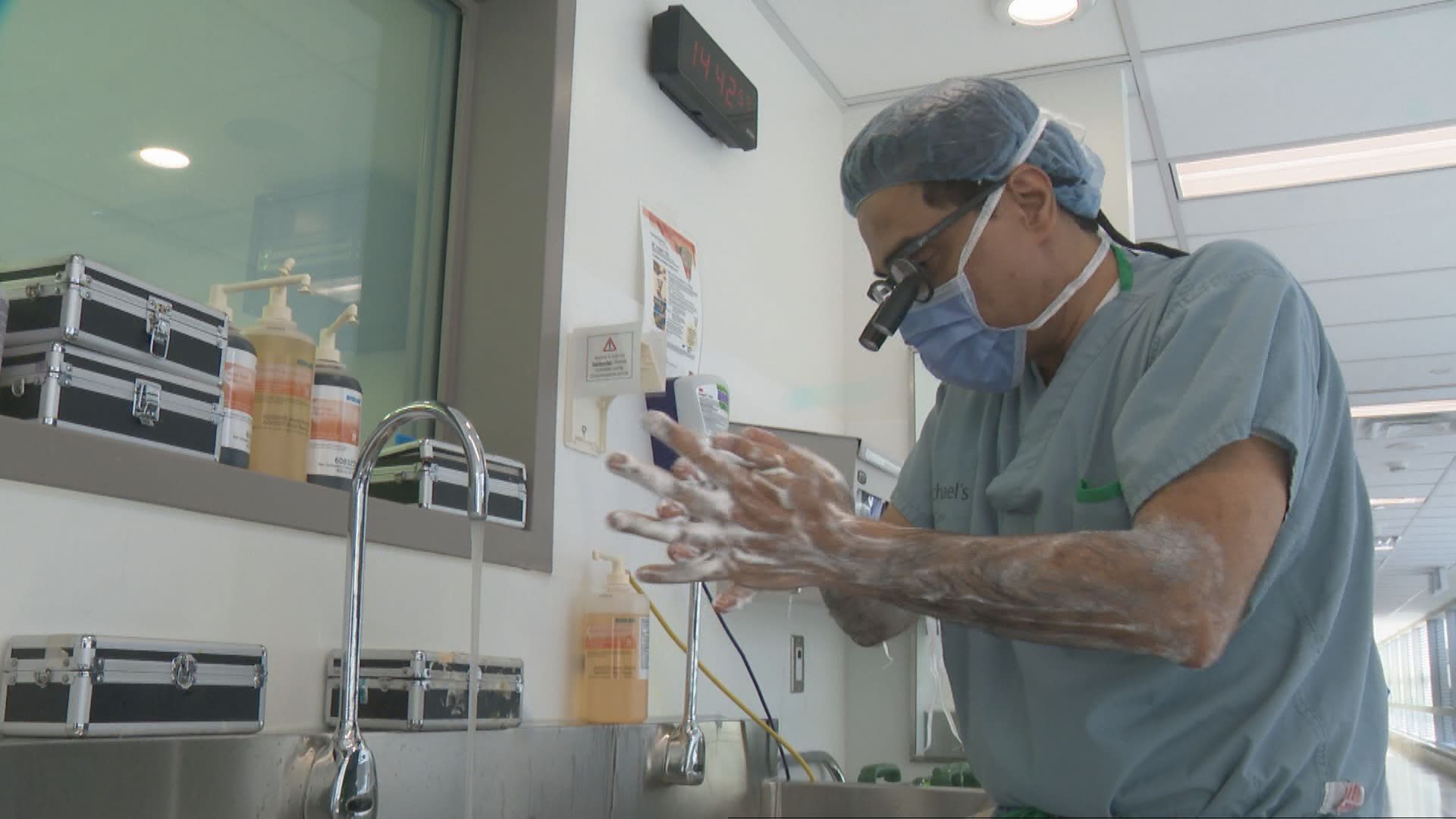
APRON BELLY: HOW TO REDUCE STOMACH SAGGING
"Apron belly" is a term commonly used to describe a sagging stomach or skin that hangs from the abdomen. An apron belly is medically known as pannus stomach or an abdominal pannus. This flap of skin can appear after pregnancy, during menopause, or from significant weight loss. It is sometimes referred to as mommy belly fat or a menopause apron.
Having a pannus is normal for many people but can also cause discomfort, embarrassment, and skin infections. Learning how to live comfortably with your apron belly can keep you physically, mentally, and emotionally healthy.
Continue reading to learn more about apron belly, including nonsurgical options for coping with and possibly reducing it.
What Does Apron Belly Look Like?
An apron belly, or pannus, is a flap or pouch of skin and tissue that hangs off the abdomen. The tissue folds over the pelvis, hanging much like an apron does.
The size of an apron belly can vary widely. An abdominal pannus is diagnosed when a flap of skin reaches the pubic hair line. Some apron bellies cover the entire genitals, and a large apron belly can even reach to a person’s knees or beyond.
Effects of Apron Belly
For many people, the appearance of an apron belly can be distressing. It’s normal to have a flaccid (sagging) stomach after pregnancy, or see an increase in abdominal fat during menopause. But cultural norms that emphasize and value thinness and flat stomachs (often associated with diet culture) can create a stigma that can have a negative impact on a person’s self-esteem and body image.
There also are physical impacts. By hanging over the skin of the lower abdomen and pelvis, an apron belly creates a skinfold where skin rubs together. While skinfolds are part of normal human biology (consider the skin of a baby's thigh, for example), they can be complicated to care for.
Skinfold areas, including those created by an apron belly, can be moist and warm. This can become a breeding ground for bacteria and lead to skin infections, including intertrigo, an itchy rash between skinfolds.
Nonsurgical Ways to Shrink Apron Belly
There is no way to lose weight in a specific part of the body, such as the belly. In addition, rapid weight loss, including after pregnancy or weight loss surgery, can actually contribute to an apron belly. Eating healthy and moving your body are always important for overall health, but they can't necessarily target one area of the body.
Some people find that strengthening their core muscles can help the appearance of apron belly. There’s no scientific evidence to support this, but there is a benefit to engaging your core muscles in exercise.
Coping With Apron Belly
Although many people want to get rid of their apron belly, it can be difficult. Instead of trying to target fat loss in your belly, consider ways to reduce your discomfort and the impact that your apron belly has on your life.
One of the best ways is to find a hygiene routine that works well for your skinfolds. Keeping the pannus clean and dry can lower your risk for painful skin infections or chafing. There may be some trial and error involved in learning to care for the pannus.
Some people like to use powder or even deodorant to reduce moisture in their apron belly. Others like tummy liners, thin pieces of fabric that are worn under the apron belly to absorb moisture and reduce friction.
If the appearance of your apron belly causes you stress, look for shape wear and underwear that make you more confident in your appearance. But remember, an apron belly is just another body type—not something that needs to be hidden.
Overview of Surgical Options
The only surefire way to get rid of an apron belly is through surgery. If your apron belly is having a big impact on your life—affecting your mobility or leading to recurrent skin infections—your healthcare provider might recommend a panniculectomy. This surgery removes the pannus.
A panniculectomy is major surgery performed under general anesthesia. Most people are out of work for about four weeks after the surgery, and it can take up to three months for the wounds to heal and the swelling to go away.
Insurance will often cover the surgery if it’s deemed medically necessary. If there is no medical need for the panniculectomy, you may have to pay out of pocket for the procedure.
Keep in mind that a panniculectomy can lead to scarring. One study found that patients who underwent the surgery were self-conscious about their scars during the first year postsurgery but had improved body confidence beyond the first year.
Summary
Having an apron belly, a flap of skin that hangs from the abdomen over the pelvis or even lower, is normal. It’s particularly common after major weight loss, pregnancy, or menopause. Although lots of people have an apron belly, the fold can lead to emotional distress, impact body confidence, increase risk for rashes and other skin conditions, and even make it difficult to walk in severe cases.
There are no diets or exercises that can directly target an apron belly. Overall weight loss and exercise may help, as can learning to properly care for your apron belly. Tummy liners, high rise underwear and body shapers may help you stay more comfortable, physically and emotionally.
Read the original article on Verywell Health.
2023-09-25T18:28:28Z dg43tfdfdgfd

